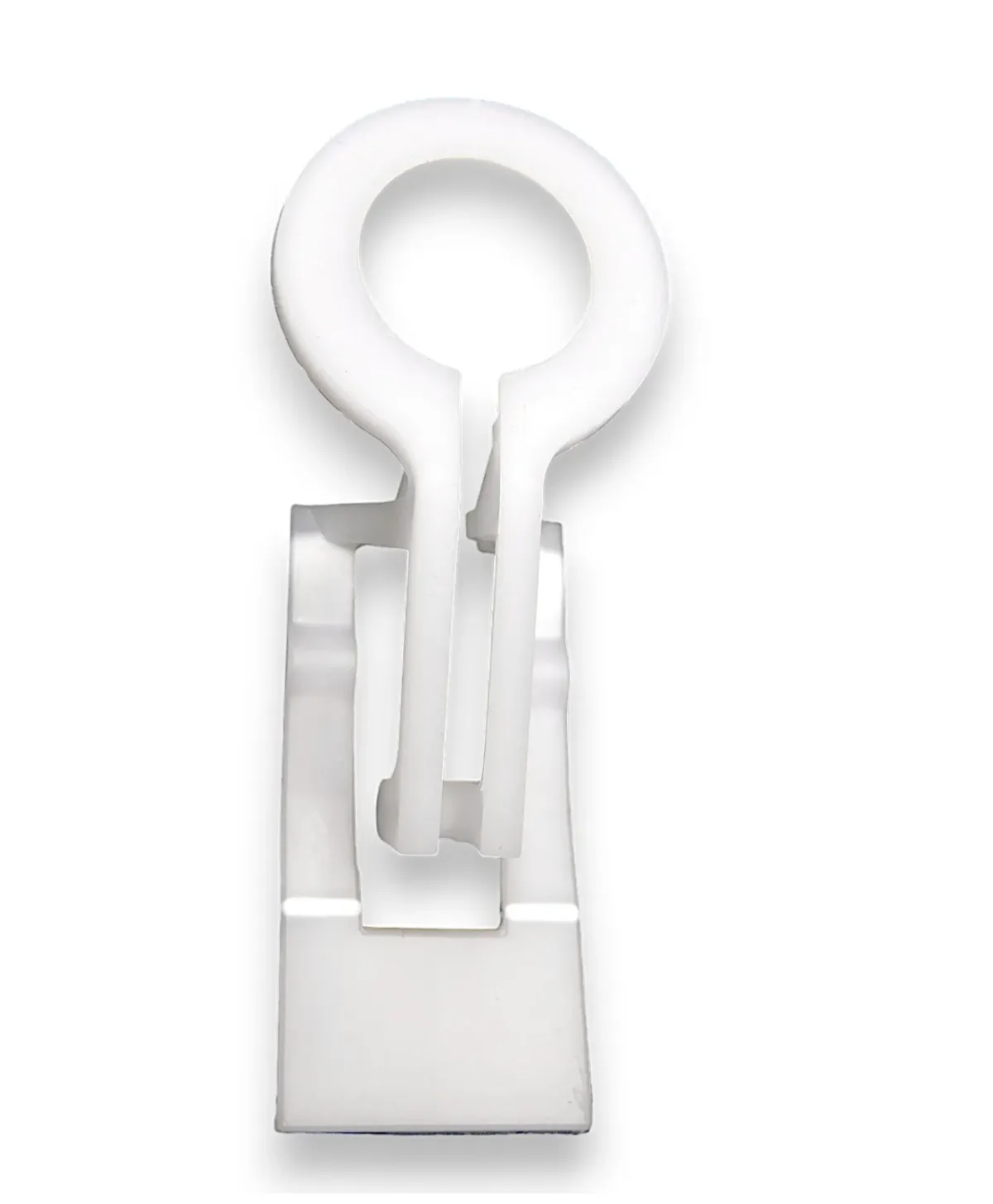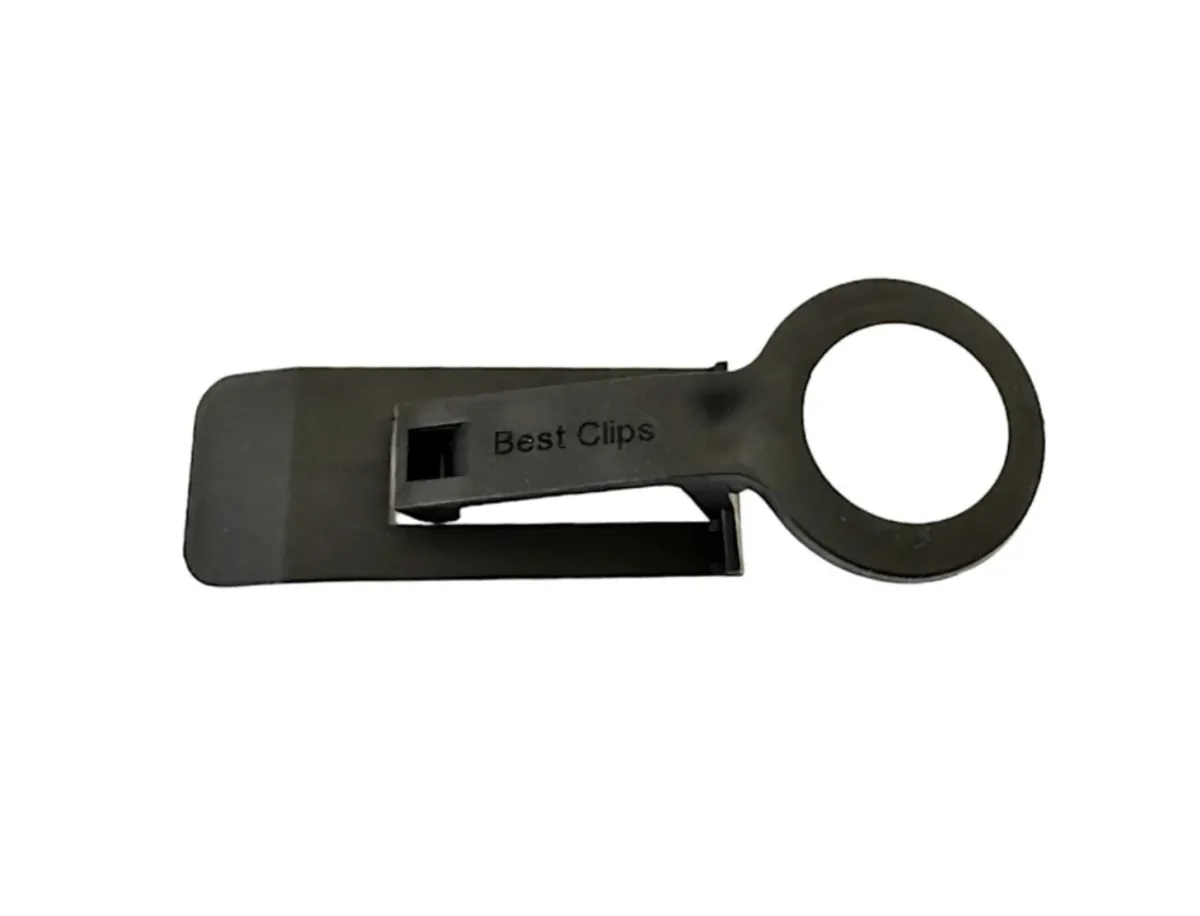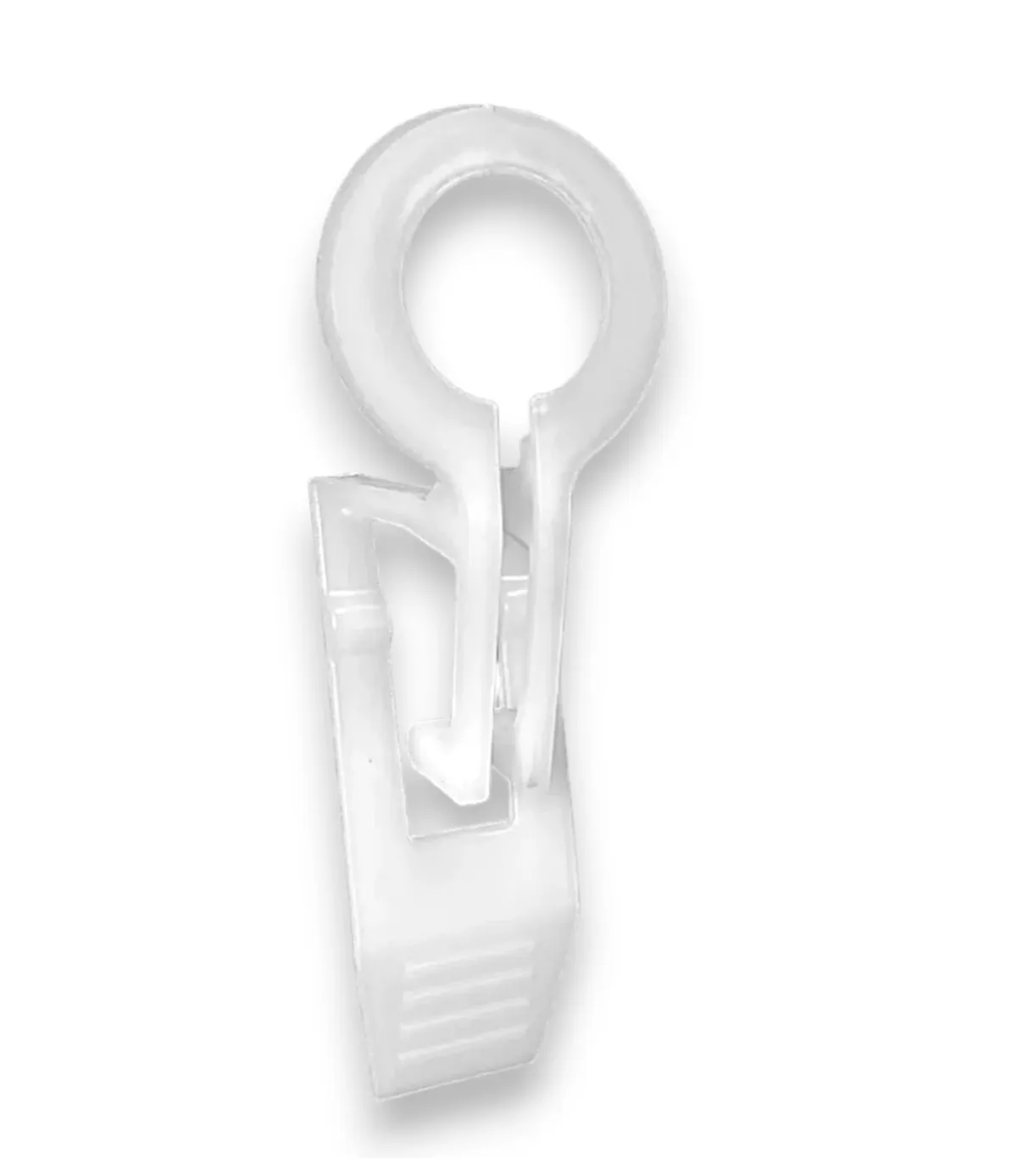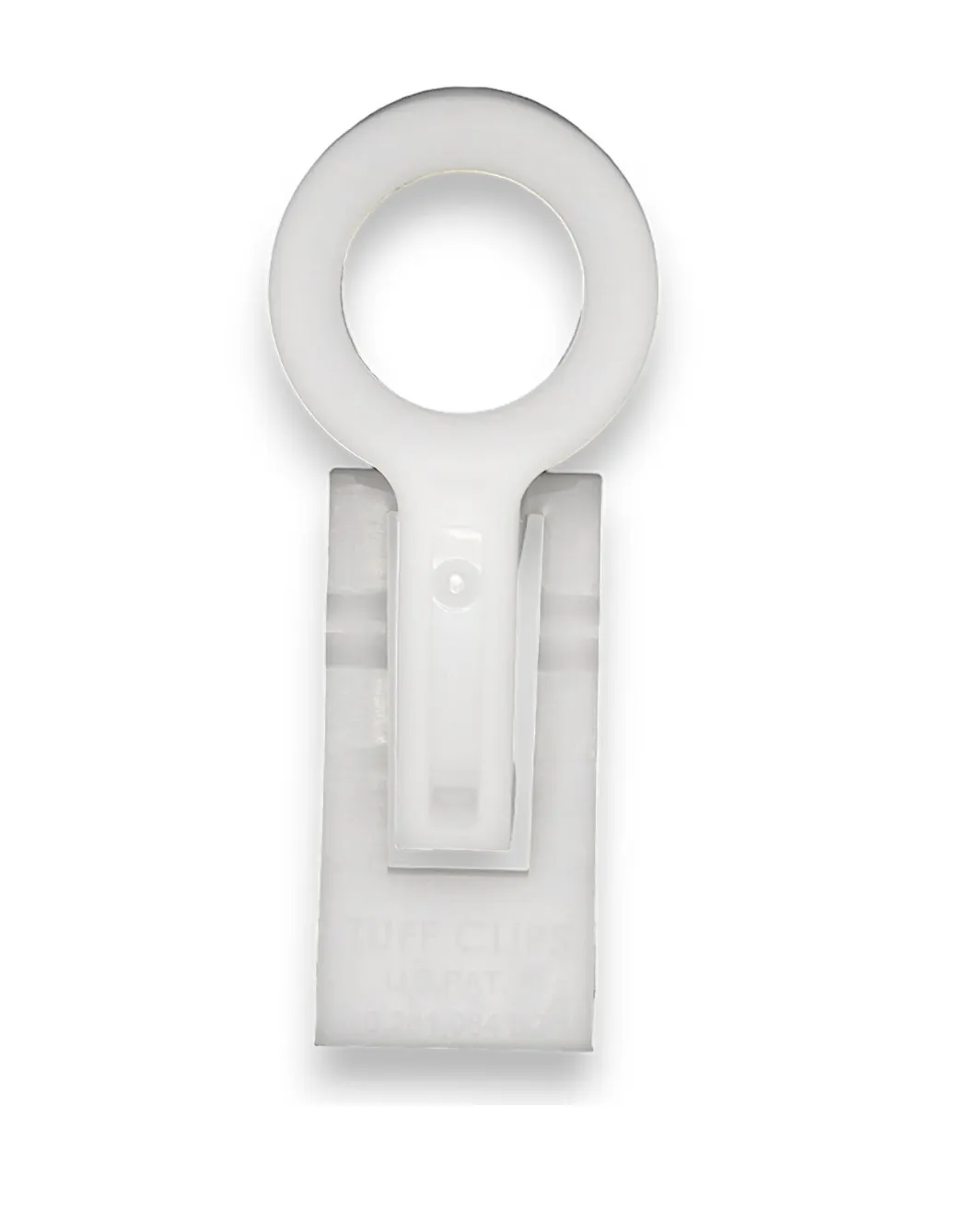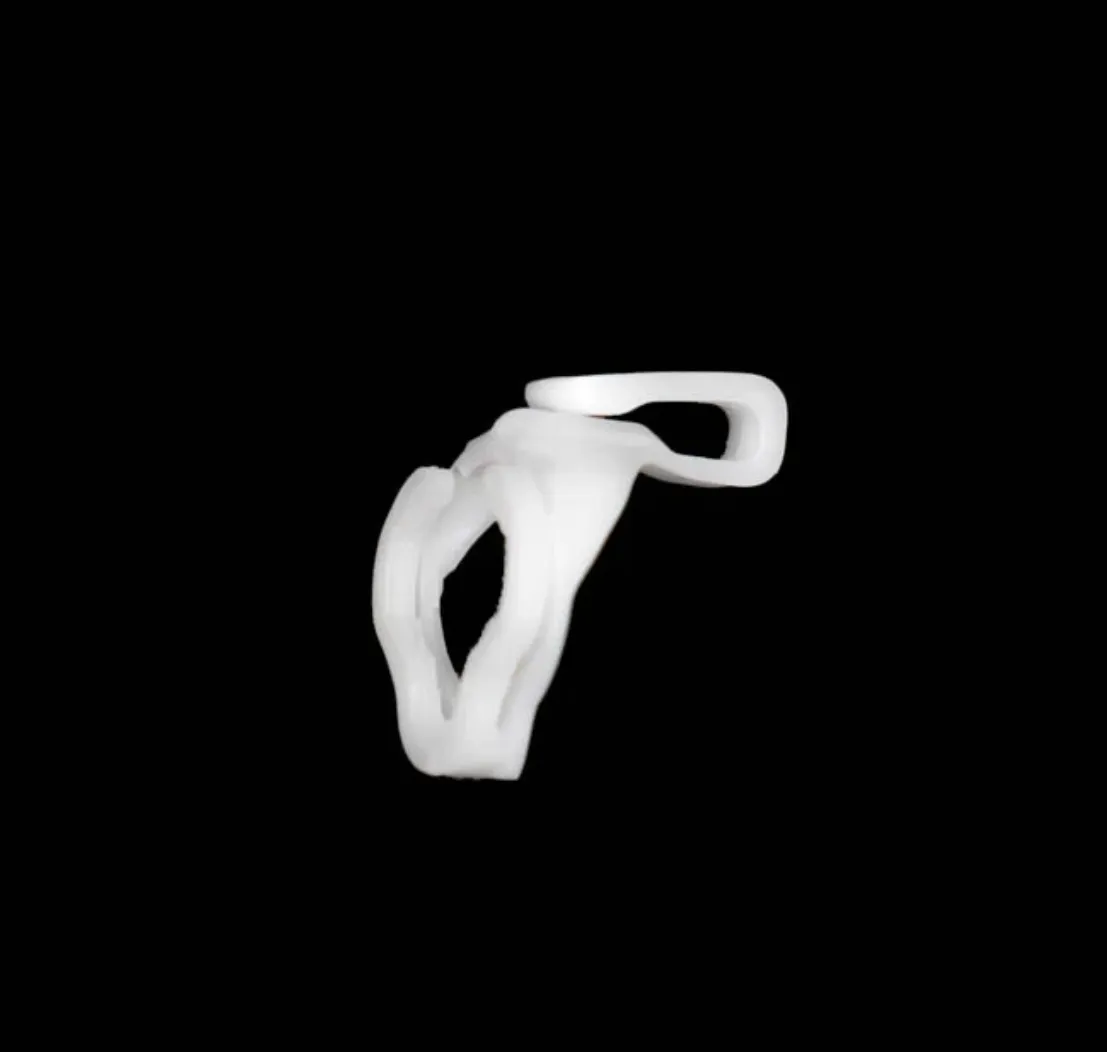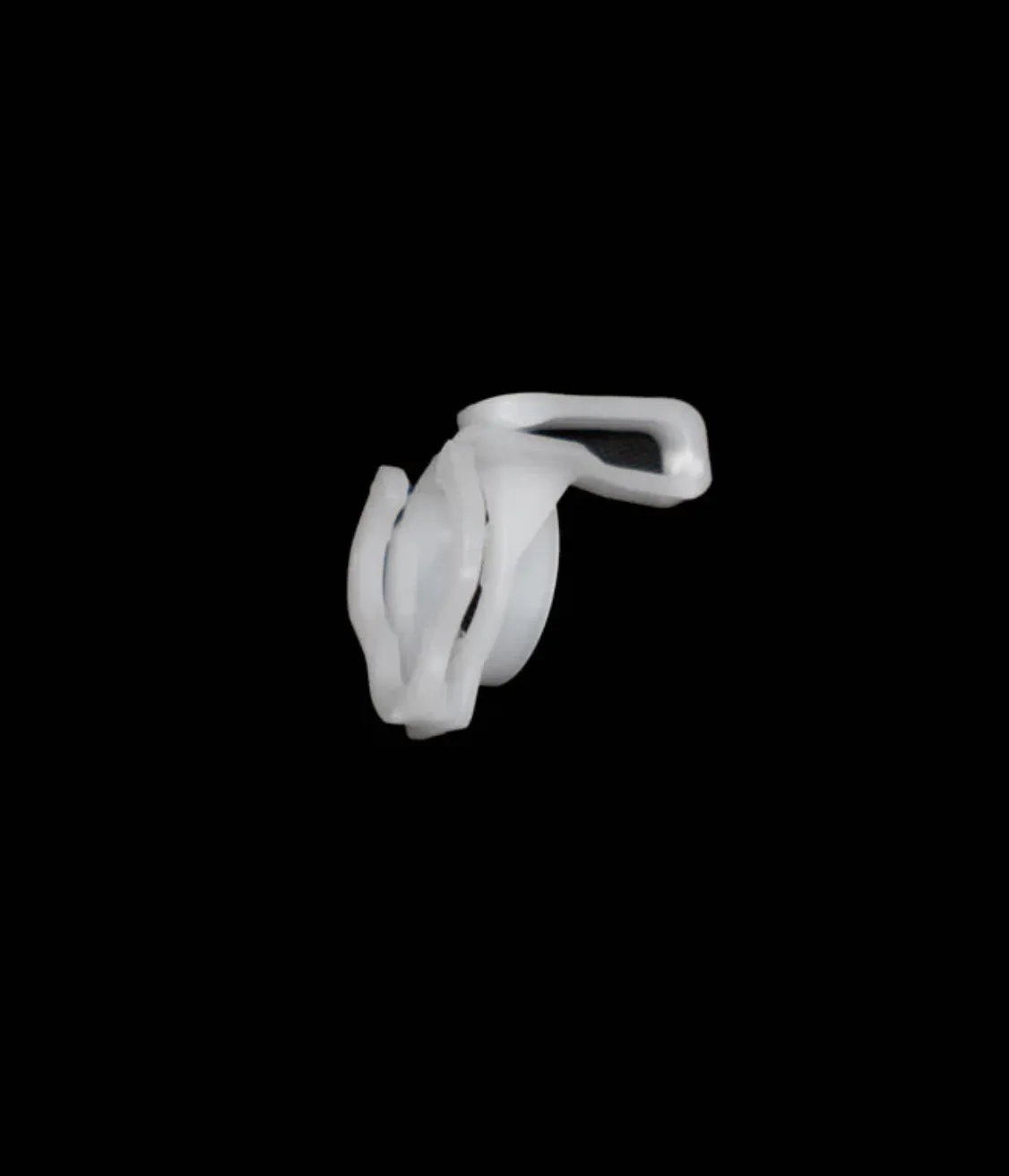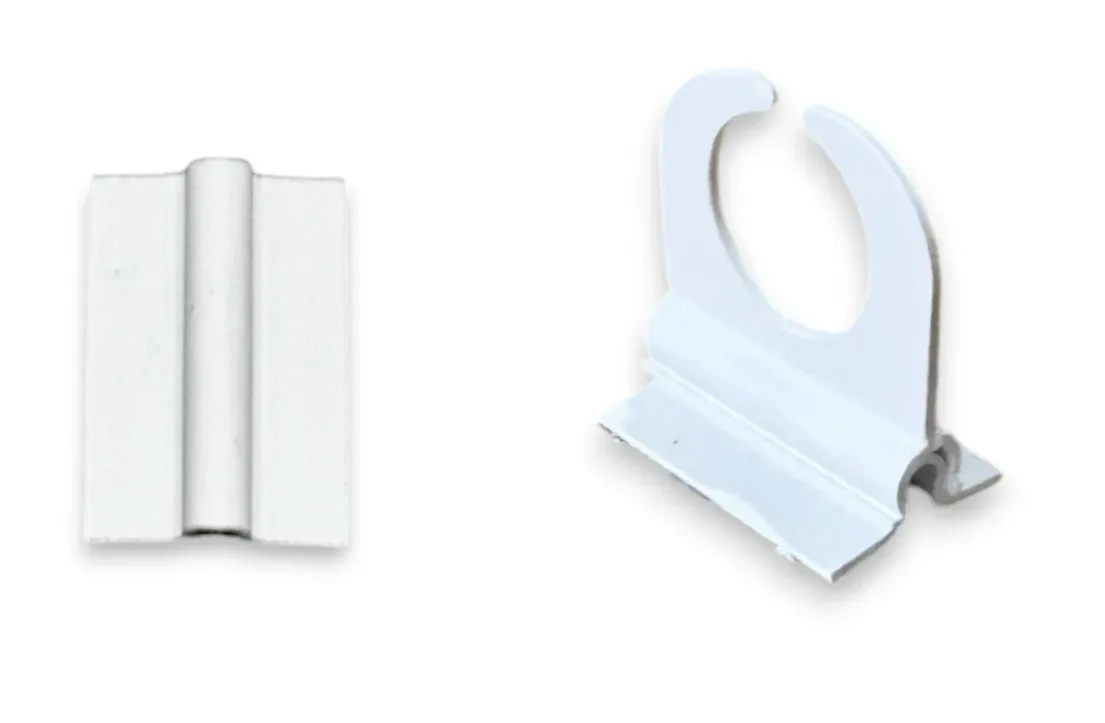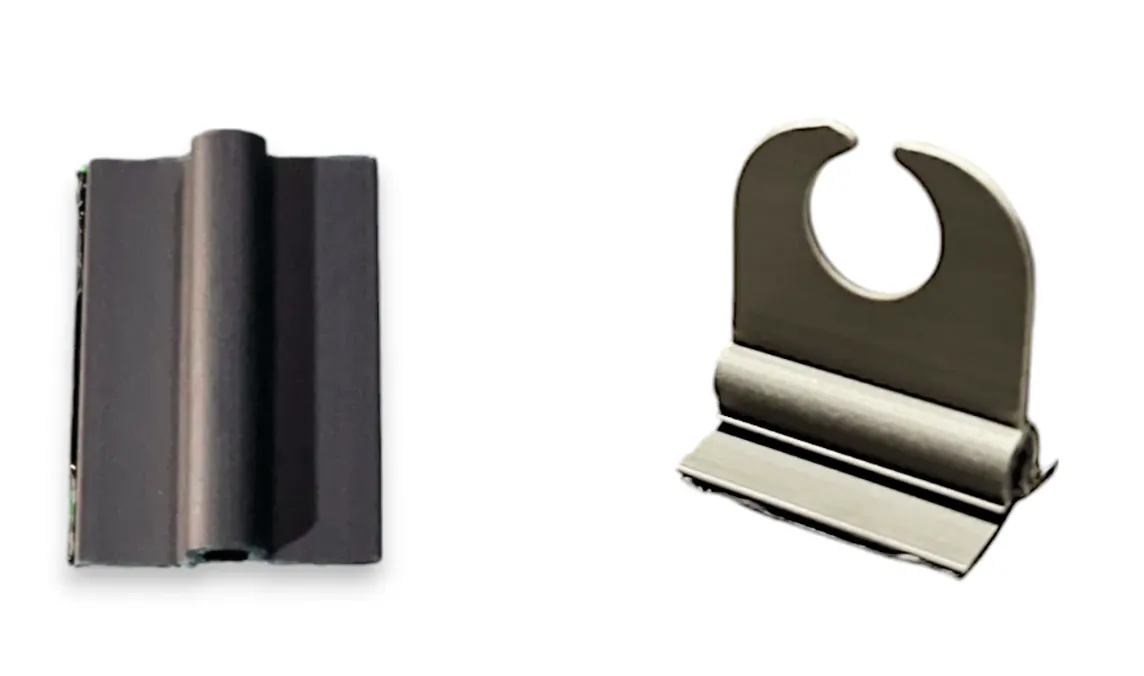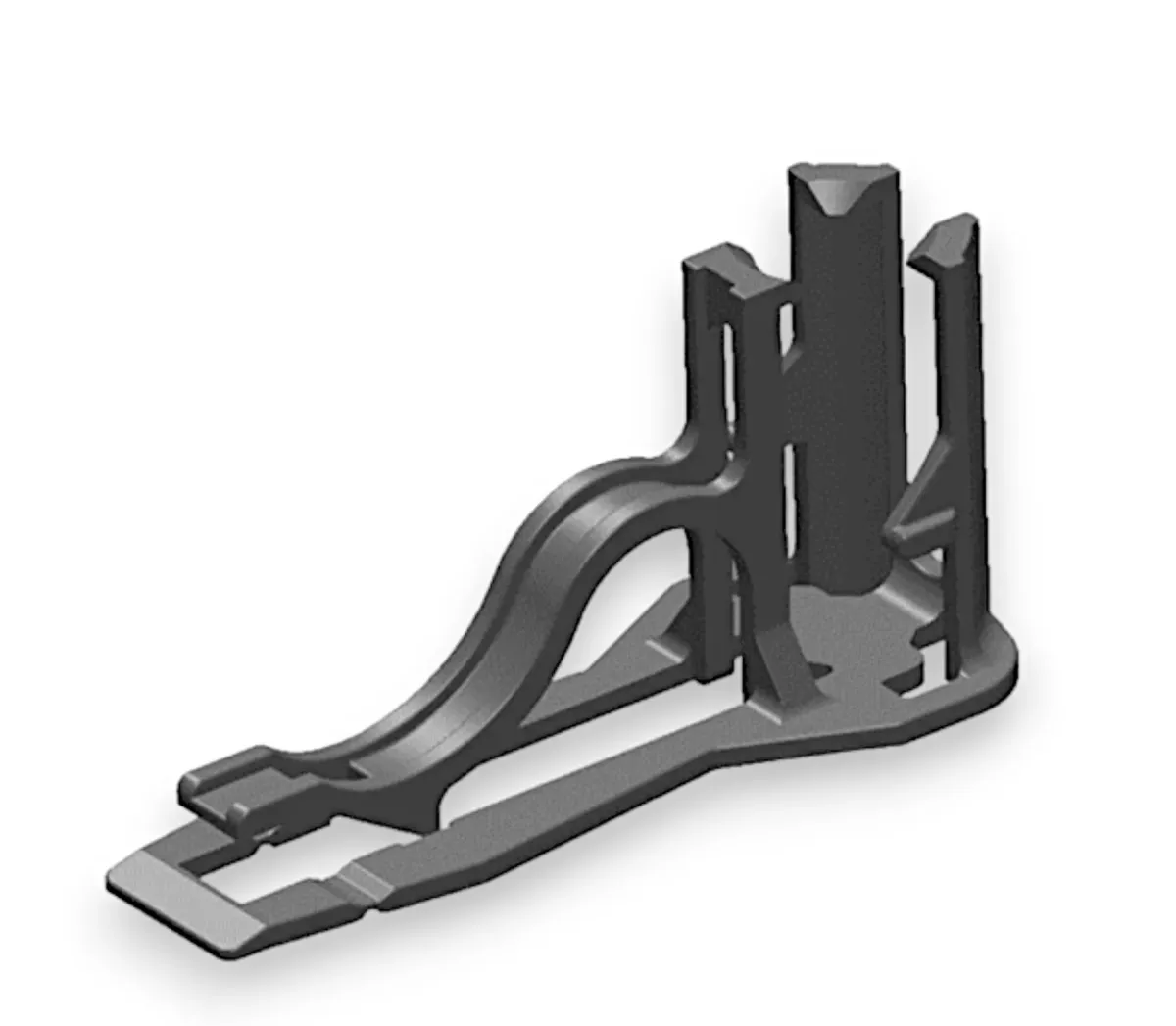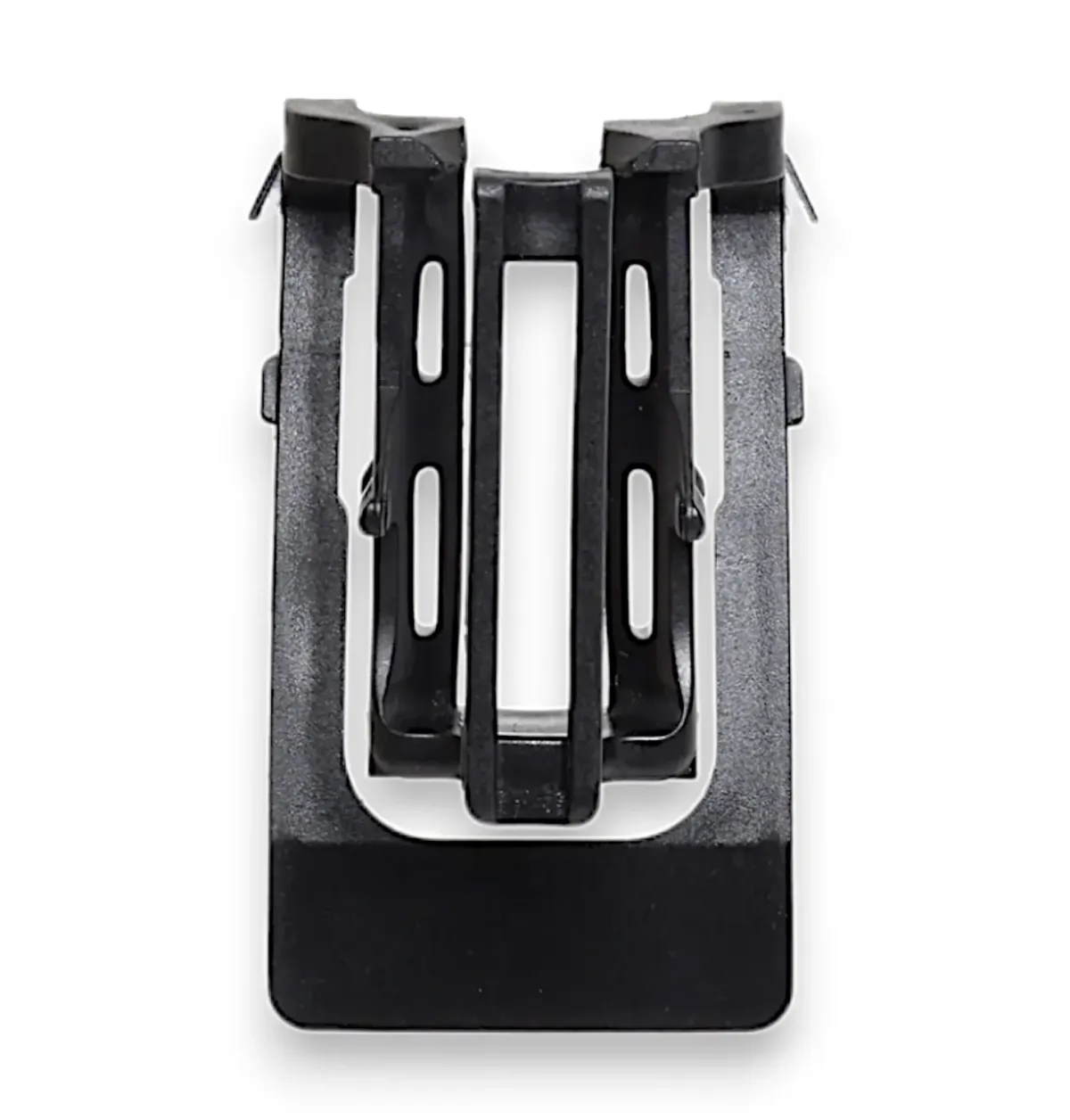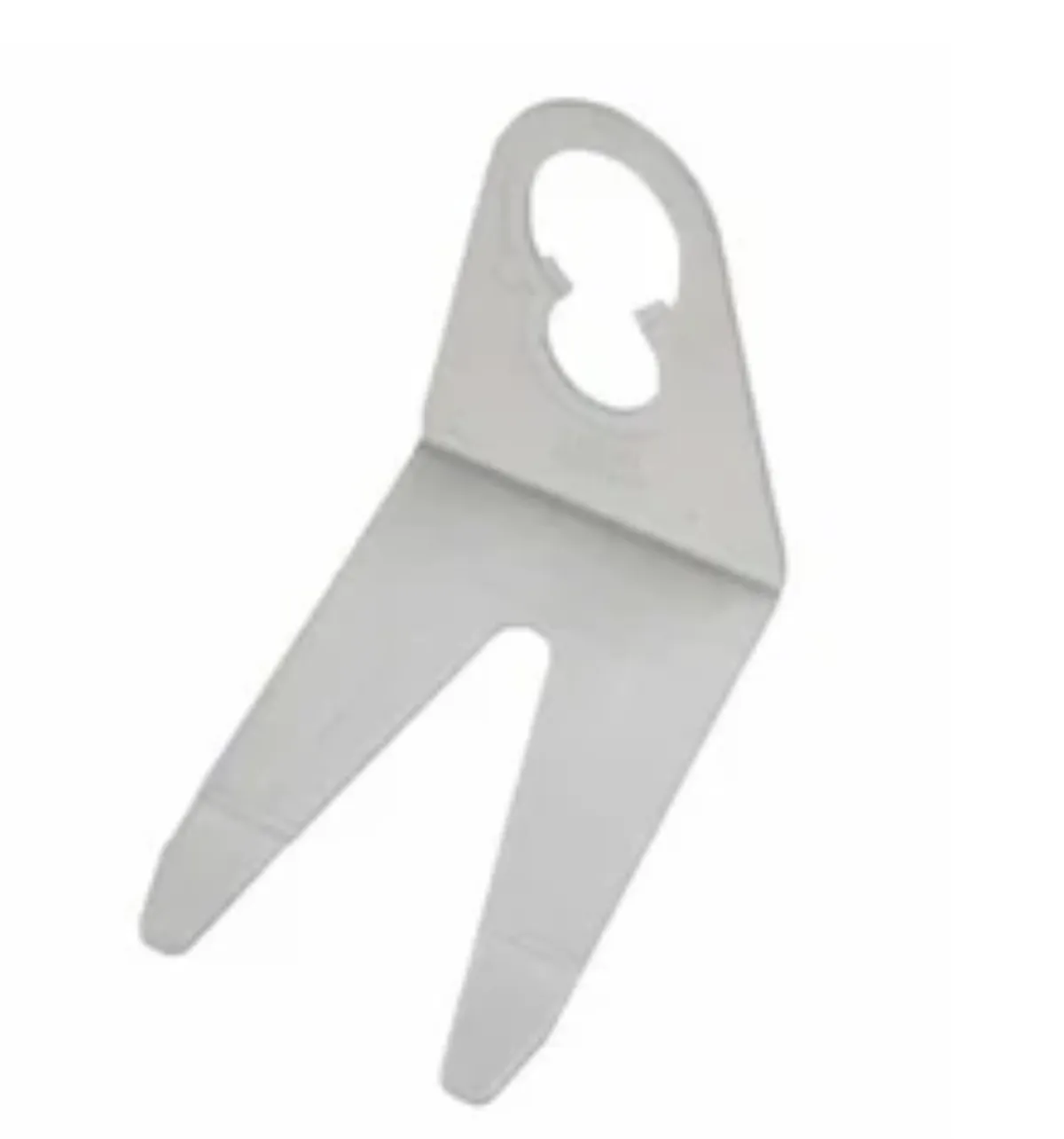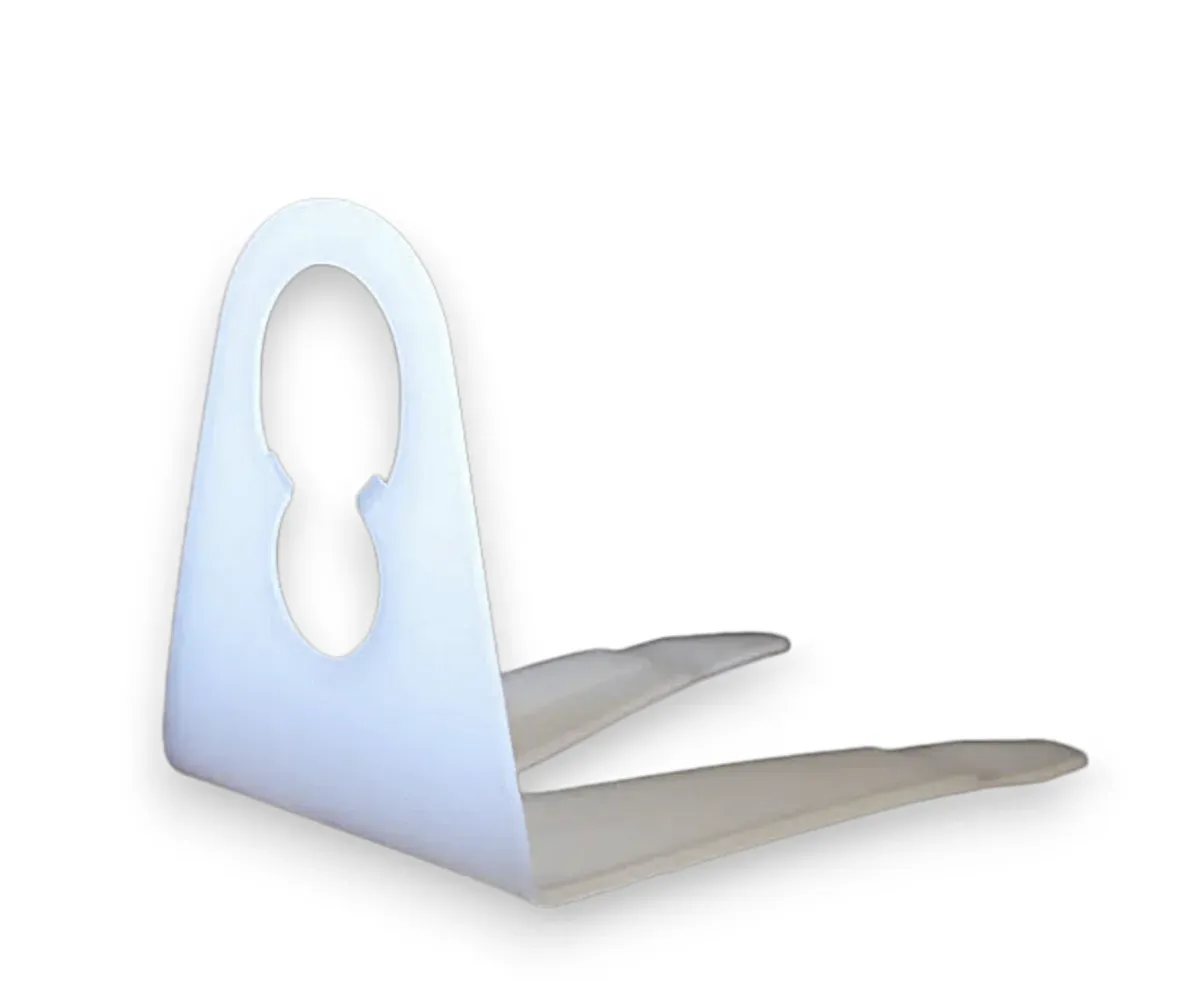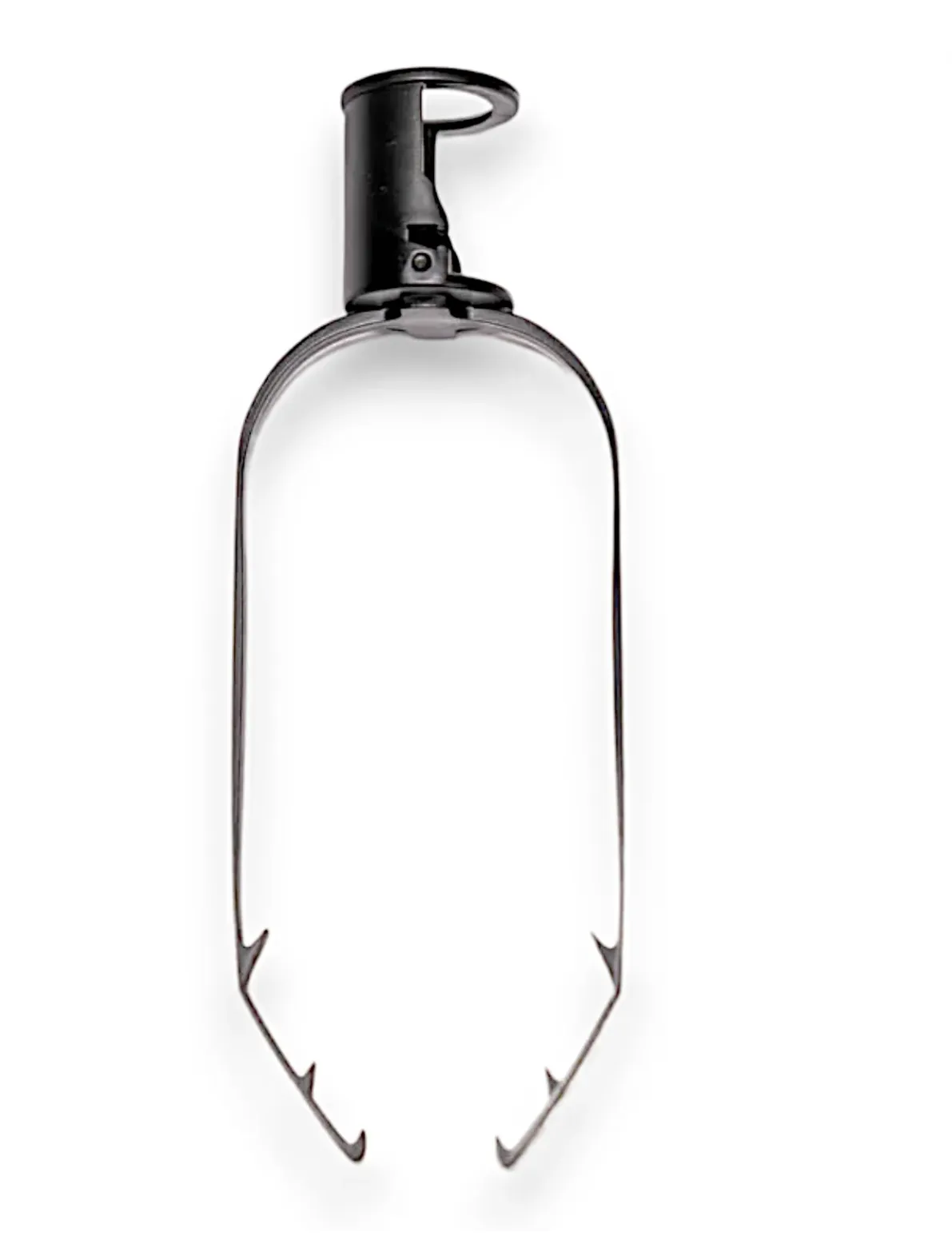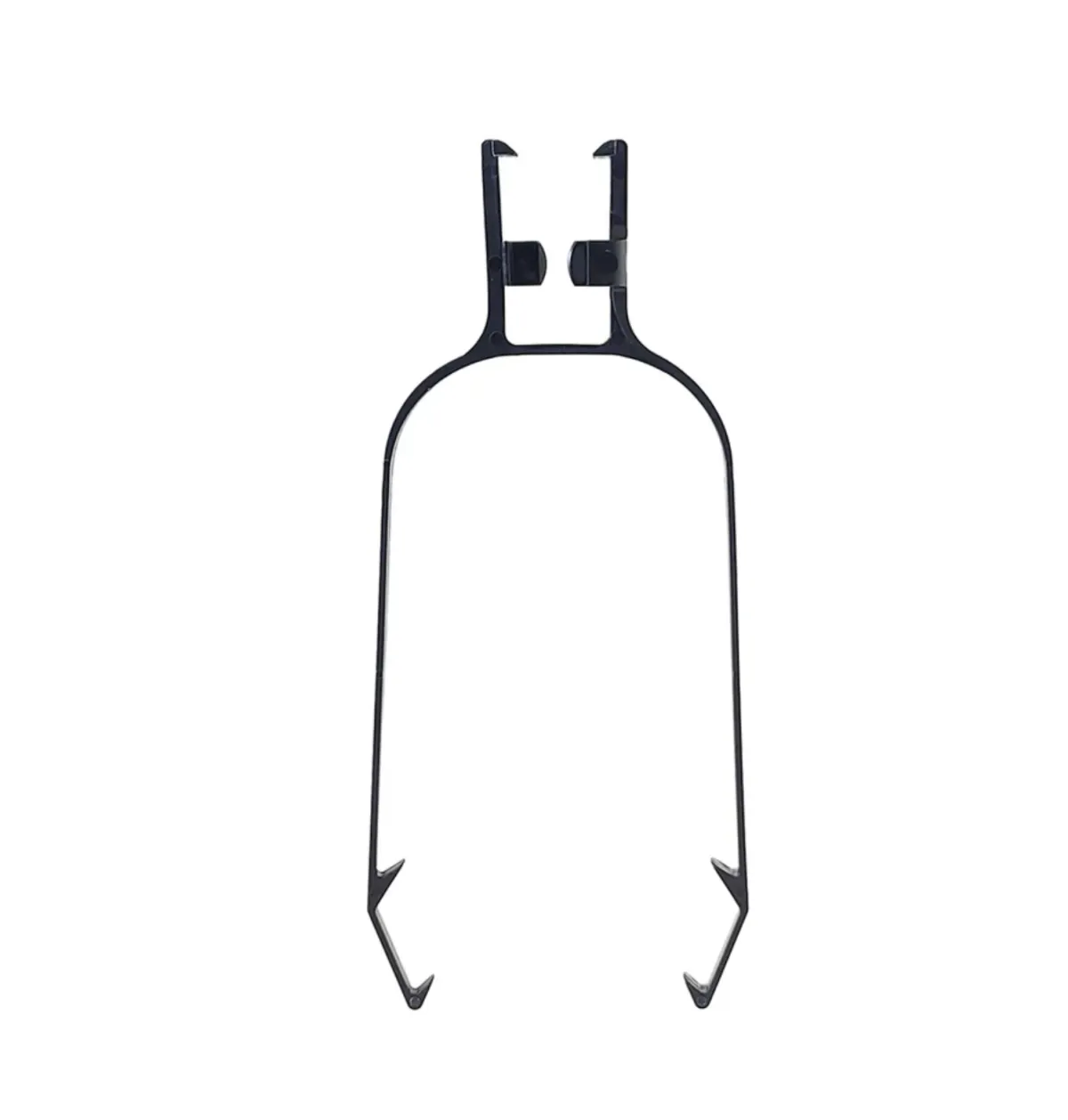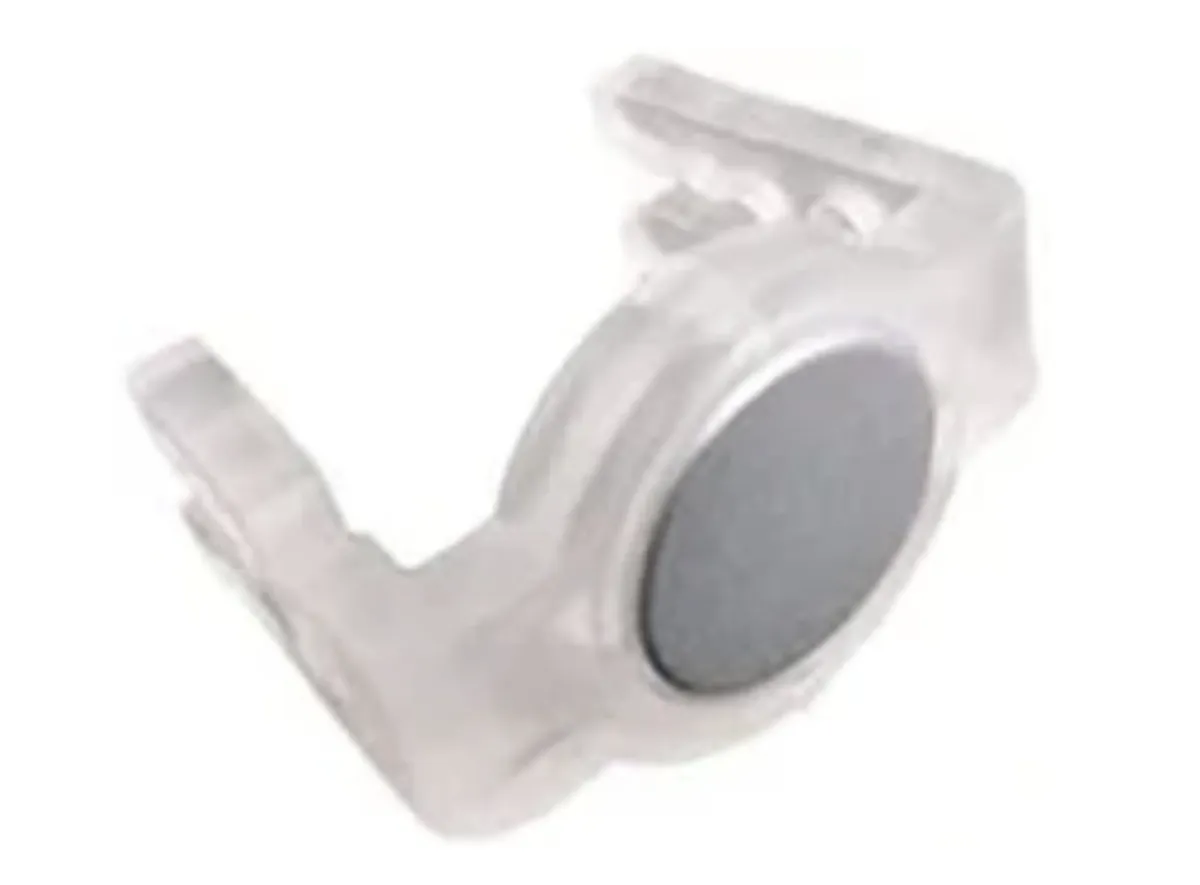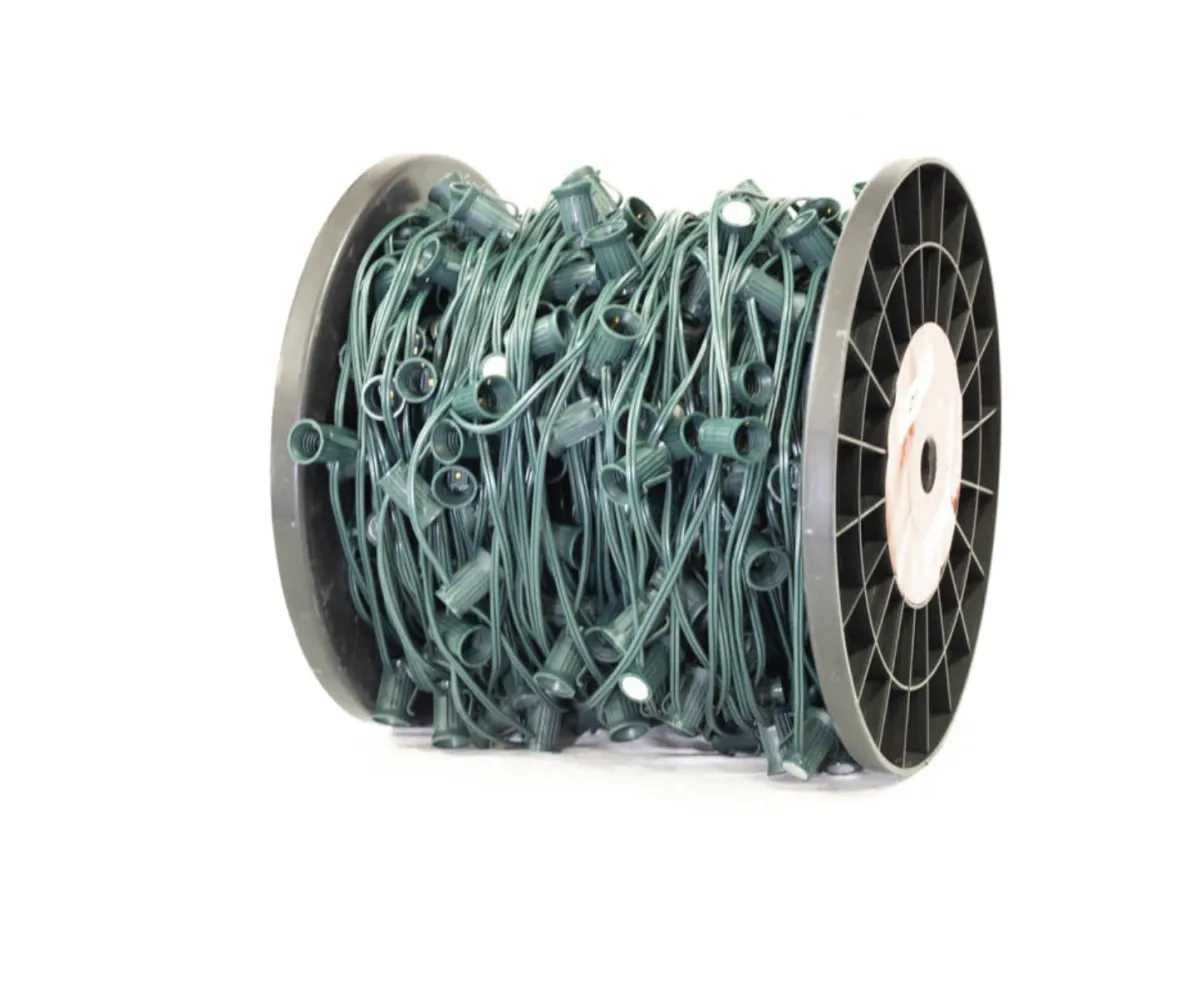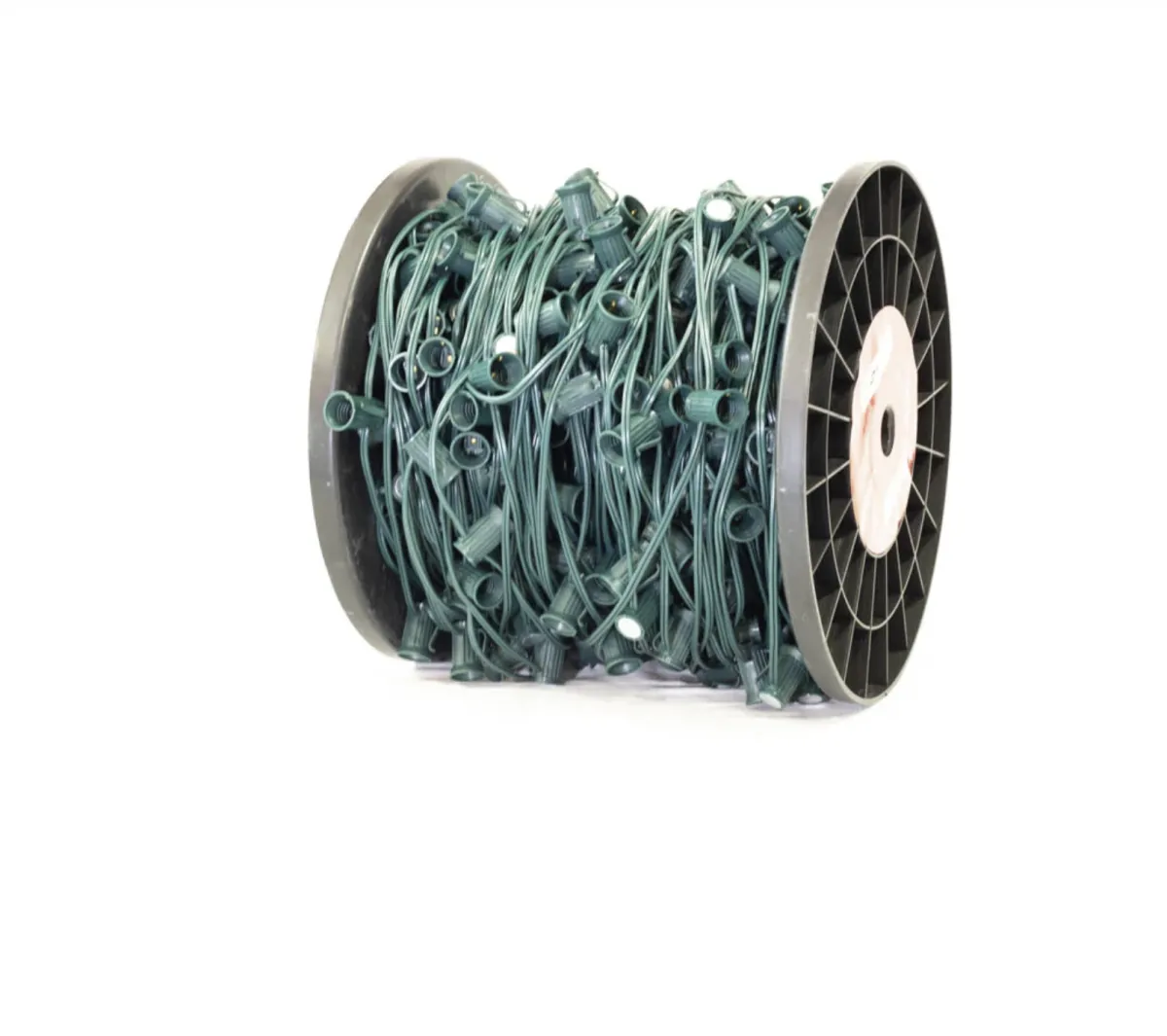Secure your Christmas lights effortlessly with our selection of professional grade clips
Secure Your Shine: Professional-Grade Christmas Light Clips for Every Surface
Click on any category below to jump directly to that section
Sturdy clips designed specifically for larger C9 bulbs. Perfect for rooflines and creating bold, visible displays.
Versatile clips tailored for medium-sized C7 bulbs. Ideal for various applications, from windows to outdoor structures.
Christmas Light Clips: Innovative clips with strong magnets for easy, damage-free installation on metal surfaces like gutters and downspouts.
Specialized clips for secure attachment along roof ridges and peaks, ensuring a perfectly straight light line on difficult angles.
Convenient pre-spaced clip strips for quick and uniform installation of light strings, saving time and effort.
Unique clips designed for specific surfaces or applications, such as brick, stucco, or wrapping lights around columns.
C9 Christmas Light Clips
C7 Christmas Light Clips
Christmas LiteClip & Strips
Streamline your holiday light installation with our commercial-grade LiteClips. Available for both C9 and C7 bulbs, these versatile clips easily secure between the socket and bulb, allowing for downward, upward, or straight-out positioning. For a complete, safe, and secure setup, pair with our LiteClipStrip mounting system. These efficient tools ensure quick and professional-looking installations for homes and businesses alike. Available in White or Brown.
Speciality Christmas Lights Clips
All-Purpose
Clip
The All-in-One Plus clip, favored by professional installers, accommodates C7, C9, C6, mini, and icicle lights, offering versatile horizontal gutter and vertical shingle mounting options, a tight grip for mini lights, layering capabilities for unique designs, and the ability to hang two light strings simultaneously, ensuring a perfect roof display.
Best Shingle
Tab Clip
This durable plastic shingle tab, more robust than standard versions, securely holds both C7 and C9 sockets, easily slides under shingles, and versatilely attaches to gutters, decks, and flat surfaces (when paired with a parapet clip), making it the perfect Christmas light accessory for various installation needs.
Tuff Tab
Clip
The durable Tuff Tabs, designed for C7 or C9 bulbs, feature Flex technology for easy installation over socketed bulbs, 360-degree rotation, outward-facing positioning on shingles or cedar shakes, two living hinges for secure hold, and weather-resistant construction for professional-grade Christmas light displays.
Christmas Light Ridge Clips
C9/C7 Best Enclosed
Ridge Clip
The C9/C7 Best Enclosed Ridge Clip (Patent Pending) is a durable, year-round solution for C7 and C9 socket strands and bulbs, featuring a fully enclosed design that securely holds lights in place without detachment, making it ideal for permanent or long-term installations.
Magnetic Christmas Lights Clips
Magnet Clip for C7/C9
Socket Wire
The Magnetic Clip for C7 or C9 Sockets, designed exclusively for SPT-1 wire (not compatible with LED stringer sets), features a high-strength solid magnet that securely holds lights horizontally or vertically on metal surfaces (excluding aluminum), allowing for quick, reusable installations year after year.
C9 Magnetic Spool
12" Spacing
This versatile lighting solution features heavy-duty, UV-protected 18-gauge SPT-1 wire rated for 840 watts, equipped with rust-resistant nickel-plated C9 magnetic sockets for secure attachment to ferrous metals, 12" spacing, 250' or 500' foot spool, compatible with E17 base incandescent and LED bulbs (sold separately), and suitable for both indoor and outdoor use.
C9 Magnetic Spool
15" Spacing
This versatile lighting solution features heavy-duty, UV-protected 18-gauge SPT-1 wire rated for 840 watts, equipped with rust-resistant nickel-plated C9 magnetic sockets spaced 15" apart on 250' or 500' spools, securely attaching to ferrous metals and compatible with E17 base incandescent and LED bulbs (sold separately) for both indoor and outdoor use.
Why Christmas Light Clips Are a Game-Changer
Transform your holiday decorating experience with professional-grade Christmas light clips. These versatile tools are the secret to creating clean, polished displays that withstand the elements all season long. Designed for various surfaces and bulb sizes, quality clips ensure your lights stay securely in place, avoiding the sloppy appearance and frequent adjustments often associated with cheaper alternatives. Easy to install and remove, these clips are favored by professionals nationwide for their durability and neat finish. By investing in commercial-grade clips, you'll save valuable time during both setup and takedown, allowing you to focus more on enjoying the festive season rather than fussing with your decorations. Make your holiday lighting effortless and impressive with the right clips, and elevate your display to a professional standard with minimal hassle.
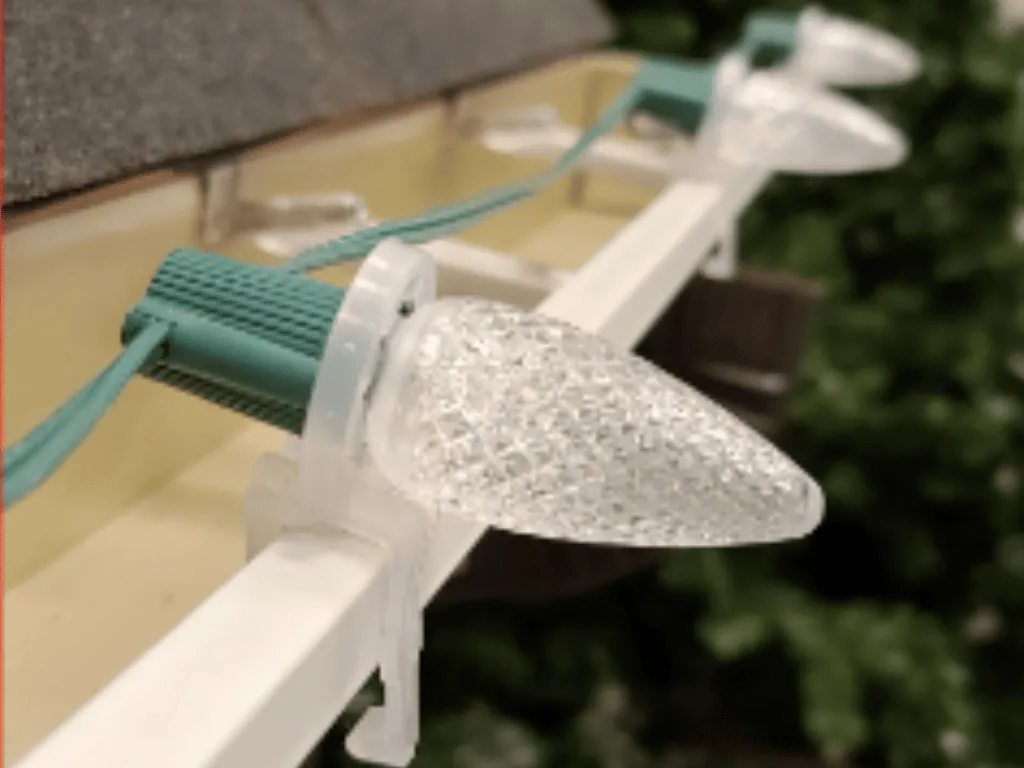
Christmas Light Clips
for Damage-Free, Professional Displays
Upgrade your holiday decorating technique by replacing staple guns and nails with versatile Christmas light clips. These innovative tools not only protect your home and lights from damage but also allow for easy adjustments after installation. Available in various designs to suit different surfaces like gutters, shingles, and flat areas, light clips can securely hold multiple bulb sizes, including C7, C9, icicle, and mini lights. By switching to clips, you'll preserve your property's integrity, extend the life of your lights, and gain the flexibility to perfect your holiday illumination with ease. Embrace this simple yet effective solution to elevate your decorating process and achieve professional-looking results without the hassle and potential harm of traditional fastening methods.
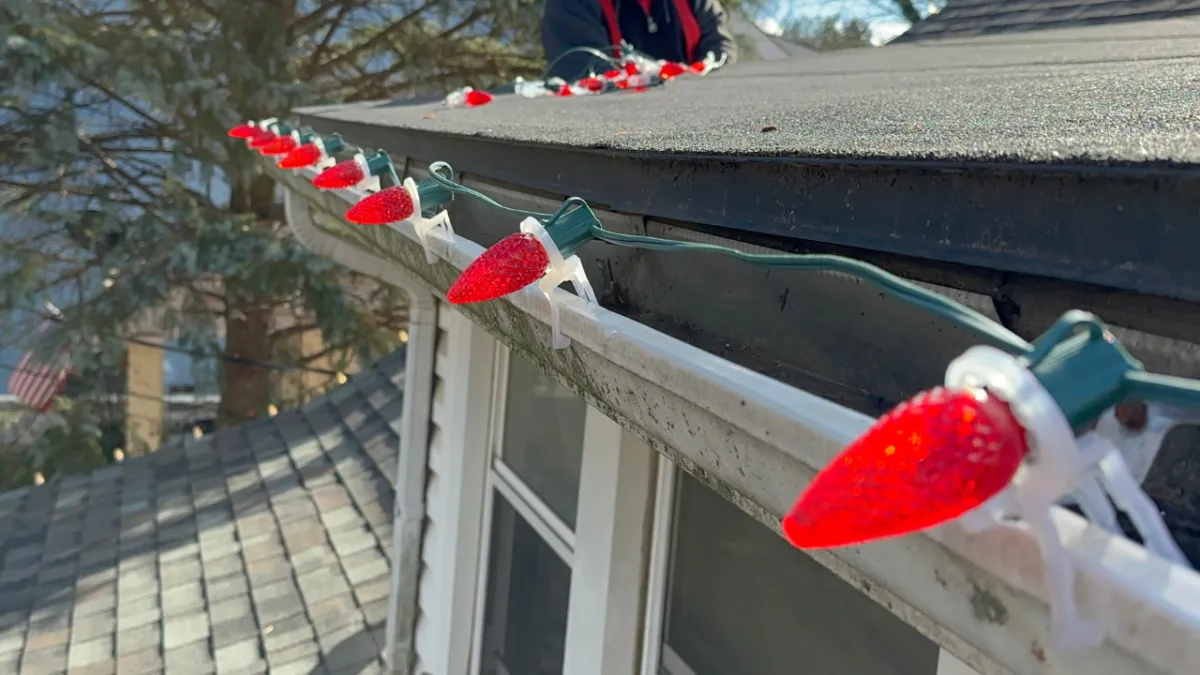
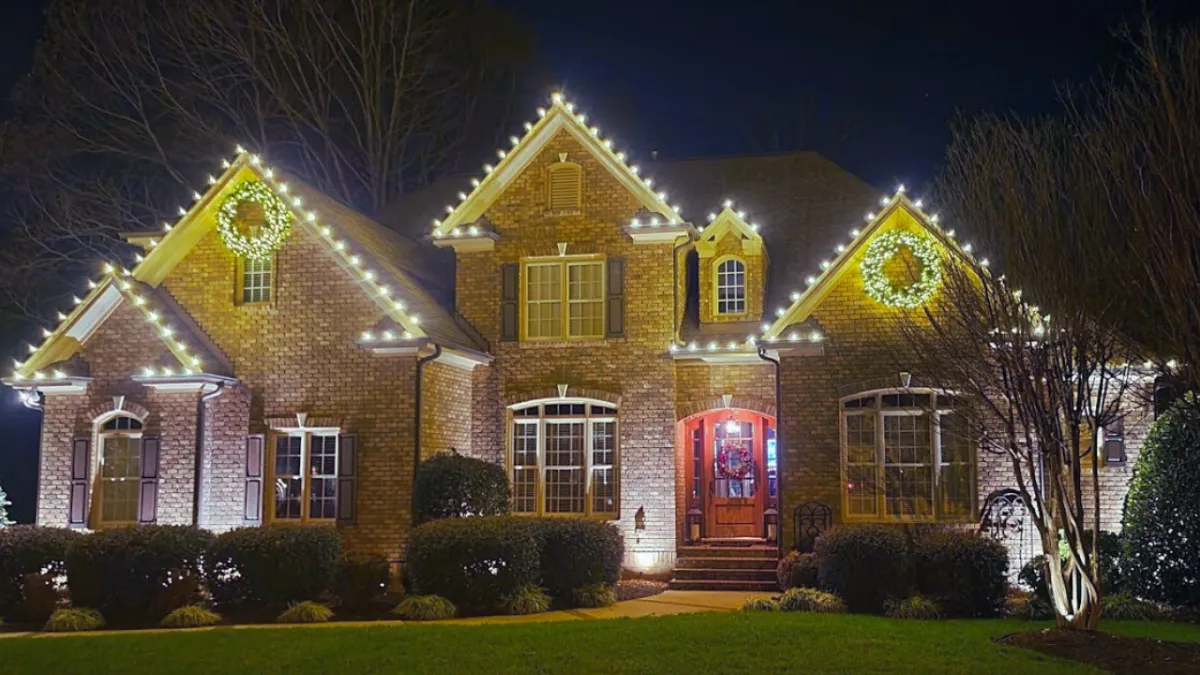
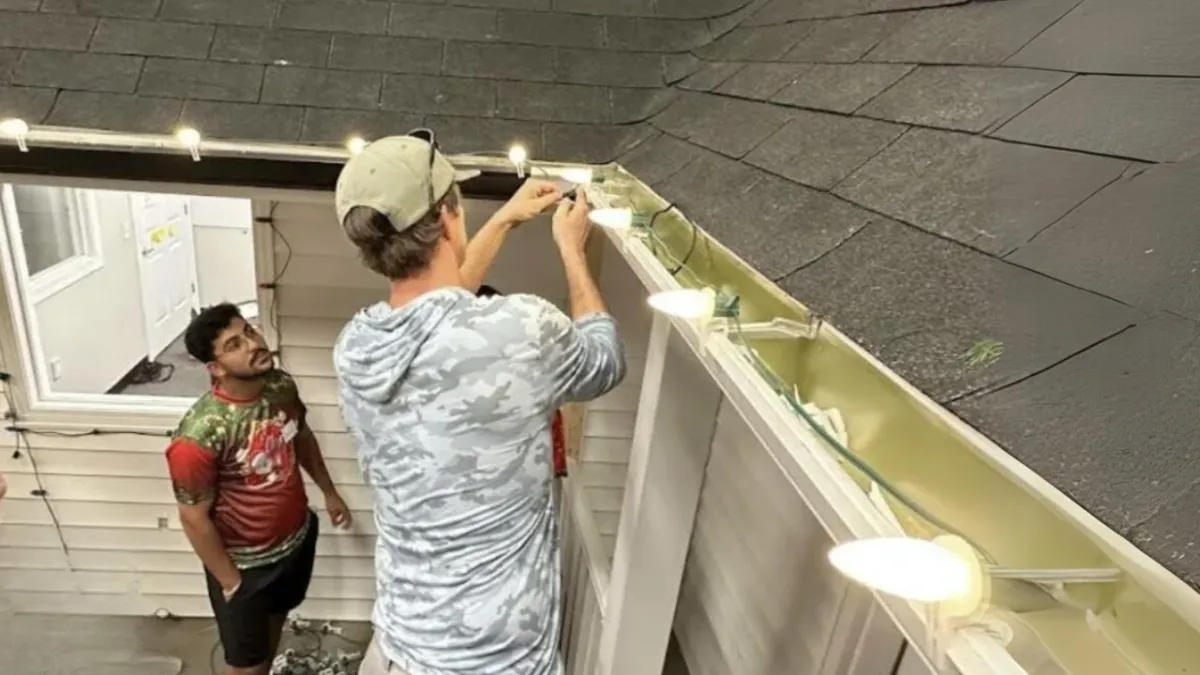
Frequently Asked Questions
How do Christmas light clips compare to traditional methods like staples or nails?
Christmas light clips are superior to staples or nails because they don't damage your home or lights, allow for easy adjustments and removal, and provide a cleaner, more professional look. They also make it easier to reuse your lights year after year without causing additional wear and tear.
Can using Christmas light clips save time during installation and removal?
Yes, using Christmas light clips can significantly reduce setup and takedown time. They're designed for easy installation and removal, allowing you to spend less time on decorating and more time enjoying the holiday season.
How do Christmas light clips improve the longevity of my holiday lights?
By securely holding your lights in place without pinching or damaging the wires, Christmas light clips help extend the life of your holiday lights. They also protect lights from harsh weather conditions, reducing the need for frequent replacements.
How do professional-grade Christmas light clips contribute to a better overall display?
Professional-grade clips ensure your lights stay in place, creating a neat and uniform appearance. They allow for precise positioning and spacing of lights, resulting in a polished, high-quality display that enhances your home's festive appeal.
What surfaces can Christmas light clips be used on?
Christmas light clips are designed for use on various surfaces, including gutters, shingles, and flat areas. There are also specialized clips for different applications, such as ridge clips and all-purpose clips.
How do Christmas light clips benefit holiday decorating?
Christmas light clips offer several benefits: they protect your home and lights from damage, allow for easy adjustments after installation, work on various surfaces, securely hold multiple bulb sizes, and help achieve a professional-looking display without the hassle of traditional fastening methods.
Discover Expert Tips on Our Blog

How to Quote Christmas Lights in 2025
The Christmas lights installation season is here, and installers across the country are closing significant contracts. The difference between those generating $50,000 and those reaching $500,000+ isn't technical skill or better equipment—it's how they quote jobs and what they believe they're worth. This comprehensive guide reveals the quoting strategies that separate struggling installers from those building thriving, profitable businesses.
The Foundation: Understanding Why Customers Buy
Before discussing pricing formulas or quoting software, address the most critical question: Why does this customer want Christmas lights?
Most installers assume customers want "a beautiful Christmas light display." That's surface-level thinking that leads to commodity pricing. Dig deeper. Are they recreating childhood memories of pulling up to grandparents' home during the holidays? Are grandchildren visiting for the first time in years? Is there a holiday party this weekend? Is this someone's last Christmas due to illness?
These emotional drivers justify premium pricing because you're not selling bulbs—you're selling irreplaceable memories and magical experiences. A 17-year-old installer in rural Georgia recently closed a $2,400 job at $10 per foot by understanding this principle. If a teenager in middle-of-nowhere Georgia can command premium pricing, the "my area won't pay that" excuse evaporates.
When customers understand you're creating something meaningful rather than just hanging lights, price objections disappear. One installer turned a basic $1,000 roofline estimate into a $6,000 comprehensive display simply by listening to a grandfather talk about visiting grandchildren. That's the power of understanding emotional drivers.
The Quick Quoting Method: Measuring from Google Earth
Speed matters in this business. The faster you provide quotes, the higher your conversion rate. Here's how to measure properties quickly using Google Earth without visiting the site:
Step-by-Step Measurement Process
Enter the address in Google Earth and examine the property from all visible angles
Use the garage door as your measuring reference - standard garage doors are 16 feet wide
Calculate roofline footage by comparing visible sections to the garage door width
Add 10% "sugar" to account for measurement variance and ensure adequate materials
Example calculation: A property shows 40 feet across the front (two garage doors), plus 32 feet for the peak, plus another 20 feet on the side visible from the street. That's 92 feet—round to 100 feet with the 10% buffer.
At $8 per foot, that's $800 for the basic roofline. But stopping there leaves massive revenue on the table.
Building the Complete Quote: Add-Ons Drive Profit
The difference between a $1,200 job and a $3,000+ job is presenting comprehensive options. Every quote should include:
Essential Add-Ons
Ground Stake Lighting: Measure the pathway from sidewalk to entrance. A 40-50 foot pathway at $8 per foot adds $320-$400.
Tree Wrapping: Estimate tree height by comparing to house features. A 10-foot tree at $40 per foot = $400. A 15-foot tree = $600. Most properties have 2-3 visible trees worth wrapping.
Roofline Peaks and Ridges: Don't stop at the front gutter line. Add peaks, ridges, and architectural details. These premium touches often double the visible footage while requiring minimal additional installation time.
Window and Column Wrapping: Columns at $100-$600 each (depending on size). Window frames add architectural interest and significant revenue.
Wreaths and Decorative Elements: Each wreath represents $350-$500 in additional revenue with minimal installation time.
The goal isn't nickel-and-diming customers—it's providing comprehensive options that create stunning displays. Present every option. Customers can't buy add-ons you don't offer.
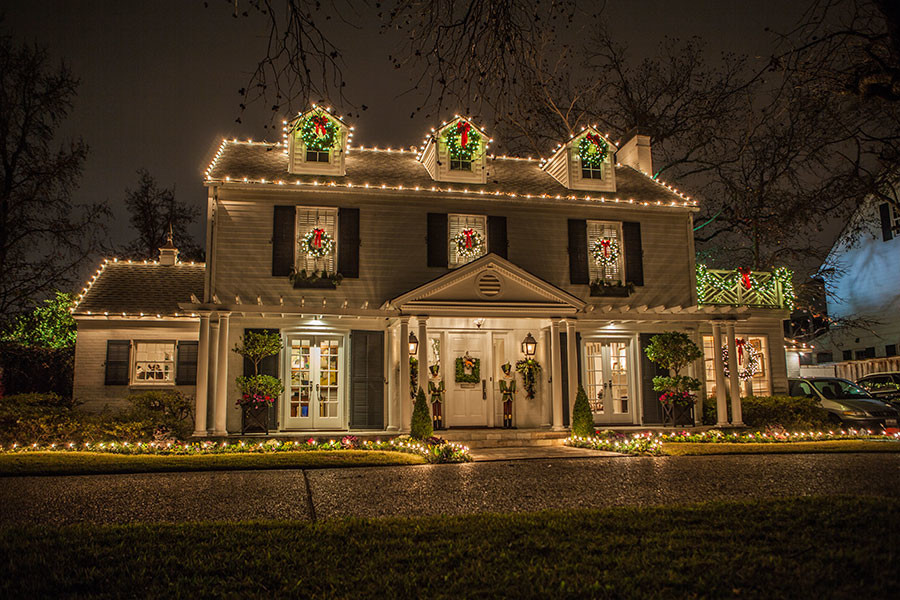
Pricing Psychology: The $6 vs. $8 Per Foot Reality
Many installers charge $6 per foot, believing higher prices won't work in their market. This self-limiting belief costs tens of thousands in annual revenue while creating unsustainable businesses.
Consider the mathematics:
At $6 per foot: A 100-foot roofline generates $600 revenue. After materials ($150), labor ($80-$100), and overhead, net profit is approximately $250-$300.
At $8 per foot: The same job generates $800 revenue. After identical costs, net profit is approximately $450-$500.
That's 60-80% more profit per job for the identical work. Scale that across 50-100 installations annually, and the difference is $10,000-$25,000 in additional profit—enough to hire help, invest in marketing, or simply earn appropriate compensation for dangerous rooftop work.
Installers charging $10-$12 per foot aren't serving different markets—they're presenting value differently and believing they deserve premium compensation.
Using Technology to Streamline Quoting
AI-Powered Content Creation
ChatGPT and similar AI tools accelerate quote creation. Instead of writing descriptions manually, use AI to generate compelling copy:
Example prompt: "I'm creating a quote for Christmas lights installation. I need a description for the 'Roofline Lights' package that emphasizes the magic and warmth, not technical specifications. Keep it professional but emotionally engaging."
The AI generates descriptions that sell experiences rather than bulbs, elevating your quotes above commodity pricing.
Design Mockups in Minutes
Tools like Canva or Holiday Home Concepts allow quick mockup creation:
Take the Google Earth screenshot
Import into design software
Add light lines digitally to show the finished product
Include before/after views
Advanced tip: Use AI image tools like Gemini to remove vehicles from driveways or enhance property appearances in mockups. Upload the image and prompt: "Remove the truck from the driveway and enhance the image quality."
CRM Systems for Professional Presentation
Platforms like Jobber or Tinsel organize quotes professionally. Create templates with:
Required line items (roofline, always included)
Optional add-ons (customers check/uncheck desired features)
Visual mockups (embedded in the quote)
Pricing that scales automatically (enter footage, price calculates)
Templates ensure consistency and speed. A quote that takes 30 minutes manually becomes a 5-minute process with proper templates, allowing you to respond faster and close more business.
The Package Approach: Forcing Higher Average Tickets
Never send a quote with only one option. Always present three tiers:
Basic Package: Front roofline only - $800-$1,200
Premium Package: Roofline + ground stakes + one tree - $1,800-$2,400
Ultimate Package: Everything including ridges, multiple trees, columns, wreaths - $3,000-$4,000
Presenting only the basic option limits customers to that choice. Presenting multiple options allows them to self-select based on budget and desire, frequently choosing mid-tier or premium options you wouldn't have offered otherwise.
This approach drives average tickets from $1,000 to $1,500-$2,000+ without pressuring customers. You're simply providing options—they decide what creates the magical experience they envision.
Overcoming the "My Area Won't Pay That" Limiting Belief
This excuse appears in every market—from Florida to California, Texas to Virginia, Maryland to Idaho. Yet in every single market where installers insist "$6 per foot is the maximum," other installers successfully charge $8-$12+ per foot.
The difference isn't the market. It's mindset.
Maryland installer: "I can't get more than $3 per foot here."
Another Maryland installer in the same market: "I'm getting $12 per foot."
Same market. Same customers. Different beliefs, different results.
An Idaho installer raised prices from $4 per foot to $7 per foot this season. His close rate dropped slightly, but revenue doubled while working half as many jobs. Less physical work, less risk exposure, higher profit—simply by believing he deserved fair compensation.
The book "Think and Grow Rich" emphasizes a fundamental truth: what you believe, you achieve. If you believe your market won't support premium pricing, you'll communicate that uncertainty in every sales conversation, ensuring customers negotiate down or choose competitors. Believe you're worth $10 per foot, and customers will too.
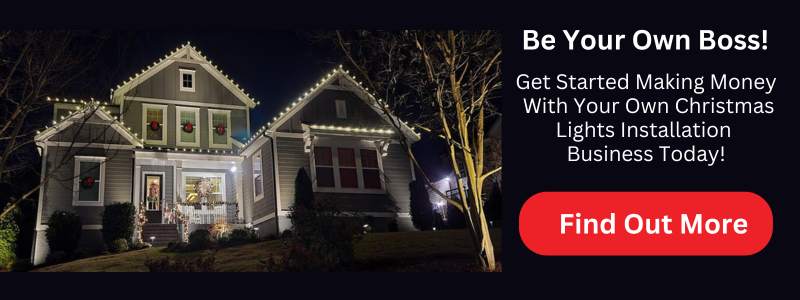
The Close Rate Reality
Expect a 15-25% close rate at premium pricing. That means 75-85% of prospects won't book. This is normal and healthy.
At $8-$10 per foot, you're attracting quality-focused customers willing to invest in professional service. Price shoppers self-select out, saving you time and frustration. Better to close 20% of leads at $2,000 per job than 40% at $800 per job—the math heavily favors premium pricing.
Installers making six figures monthly often have 15% close rates. They generate enough leads through consistent marketing that volume compensates for selectivity. This approach builds sustainable businesses rather than exhausting hustles.
Leasing vs. Selling: Building Recurring Revenue
The lease/rental model (often called "red carpet service") generates significantly more lifetime value than selling lights to customers.
The Selling Model
Charge $14-$16 per foot in year one (to cover materials and profit), then $8 per foot in subsequent years for installation only. Customers own the lights and store them.
Problems: You lose control of materials. Customers store lights improperly (tangled masses in tubs). You're liable for damaged materials you didn't create. Year two becomes low-margin labor.
The Leasing Model (Recommended)
Charge $8-$10 per foot annually. You own the lights, handle storage, maintain equipment, and provide hassle-free service.
Benefits:
Predictable recurring revenue
You control material quality
Customers pay for convenience, not equipment
Flexibility to offer color changes
If customers don't return, lights go to another property
The red carpet service emphasizes value beyond materials: "We handle everything. You never touch a ladder, store anything, or worry about repairs. If you want different colors next year, we'll swap them. It's completely hassle-free."
This positioning justifies annual fees rather than the "pay once, install cheap forever" trap that destroys profitability.

Marketing Integration: Making the Phone Ring
The best quoting system in the world is worthless without leads. To generate consistent quote requests:
Yard Signs: Deploy 100+ signs weekly. This remains highest-ROI marketing for local service businesses. Track which locations generate calls to optimize placement.
Google Business Profile: Post daily with installation photos, customer testimonials, and project updates. Respond to every review immediately. A robust profile drives local search visibility.
Facebook Advertising: Expect $15-$30 per lead. Budget $50-$100 daily now, scaling to $100-$200 daily from November onward. Include budget qualifiers in ads: "Starting at $600" filters out customers expecting $100 jobs.
Social Media: Post consistently showing finished installations, happy customers, and behind-the-scenes content. Every post is a passive salesperson working 24/7.
Referrals: Request reviews systematically after every installation. Reviews drive future organic leads more effectively than any paid advertising.
The formula is simple: generate leads, quote quickly with premium pricing, present comprehensive options, close 15-25%, and repeat. Do this consistently, and six-figure seasonal revenue becomes the norm.
Addressing Common Objections
"I already have lights, I just need installation": Politely decline or charge premium for liability. You don't know how customers stored materials, whether they're damaged, or if they meet safety standards. Your insurance likely doesn't cover installing customer-owned materials. Better to lose this job than accept liability for substandard materials.
"Your competitor charges $6 per foot": "I appreciate you sharing that. Our pricing reflects professional-grade materials, comprehensive insurance, experienced crews, and guaranteed satisfaction. If lowest price is your primary concern, we might not be the best fit. But if you want a premium, hassle-free experience with stunning results, we're perfect for you."
"Can you do it cheaper?": "We've priced this to deliver exceptional value while ensuring our team can provide the quality you deserve. Rather than reducing price, we could modify the scope—perhaps focusing on the front of your home this year and adding more next year?"
Confidence in your pricing eliminates most objections. Uncertainty invites negotiation.

What's a realistic first-year revenue target for new installers?
First-year installers executing recommended strategies—premium pricing, comprehensive quoting, consistent marketing—can realistically generate $30,000-$100,000 in a partial season starting in October. Those beginning earlier in the year and building strong Google Business Profiles can reach $50,000-$150,000. These aren't outliers—they're normal results for installers who believe in their value and market consistently.
How should I price columns, bushes, and trees?
Columns: $100-$600 each depending on height and complexity. Trees: $40 per foot of height ($400 for a 10-foot tree, $600 for 15-foot). Bushes: Estimate strands needed, charge $30-$40 per strand. For three strands per pillar across three pillars, charge $120-$150 per pillar or $360-$450 total for all three.
Should I pre-qualify leads or quote everyone?
Both approaches work. Pre-qualifying saves time once you're receiving 100+ leads weekly. Early in the season or with manageable lead volume, quote everyone. Some "unlikely" prospects surprise you. As volume increases, implement qualification: "Our packages start at $900 for comprehensive service. Does that sound like the service level you're looking for?"
What close rate should I expect at $8-$10 per foot?
Expect 15-25% at premium pricing. This is healthy and normal. You're attracting quality-focused customers while price shoppers self-select out. Some six-figure-monthly installers close only 15% of leads—they simply generate enough volume through marketing that selectivity doesn't constrain revenue.
How fast should I provide quotes after receiving inquiries?
As fast as possible—ideally within 2-4 hours during business hours, maximum 24 hours. Speed-to-lead directly impacts conversion. Customers contact multiple installers; the first professional quote often wins. Use templates and technology to streamline the process, allowing rapid response without sacrificing quality.
Can I really charge $10-$12 per foot in my market?
Yes, if you believe you can. Installers in every market—rural Georgia, Idaho, Maryland, Virginia, Texas, California—successfully charge $10+ per foot. The limiting factor isn't your market; it's your mindset and how you present value. Start at $8 if $10 feels uncomfortable, but commit to raising prices as confidence grows.
What's the best CRM for quoting: Jobber, Tinsel, or something else?
Jobber excels at quoting, job routing, and crew management. Tinsel offers similar features with different interface preferences. For follow-up automation, Go High Level is excellent. Many successful installers use Jobber for operations and Go High Level for marketing automation, leveraging each platform's strengths. Start with one and add the second as complexity increases.

How do I respond when customers ask me to install their existing lights?
Politely decline in most cases: "I appreciate you thinking of us, but our insurance doesn't cover installing customer-owned materials, as we can't verify their safety or condition. We'd be happy to provide a quote for professional-grade lights with our red carpet service." The liability isn't worth the modest revenue, and these jobs are typically unprofitable.
When do most sales close: before Halloween or November?
Most sales close November 1st through Thanksgiving, with peak volume the week of Thanksgiving. October generates quotes and builds pipeline, but conversion accelerates dramatically in November as weather changes trigger holiday mindset. Don't be discouraged by slow October closings—that's normal seasonal pattern.
What's the fastest way to increase average ticket from $1,000 to $2,000?
Present comprehensive packages with every quote. If you're only quoting rooflines, you'll never exceed $1,200 average tickets. Add ground stakes, trees, wreaths, columns, and ridge lighting to every quote as optional add-ons. Customers can't buy options you don't present. This single change—presenting everything rather than basic options—drives average tickets from $1,000 to $1,500-$2,000+ without pressuring anyone.
Copyright ©2025 All Right Reserved website designed by christmaslights.io
Terms of Service / Privacy Policy
Have questions or need assistance?
Contact us at (855)619-LITE


